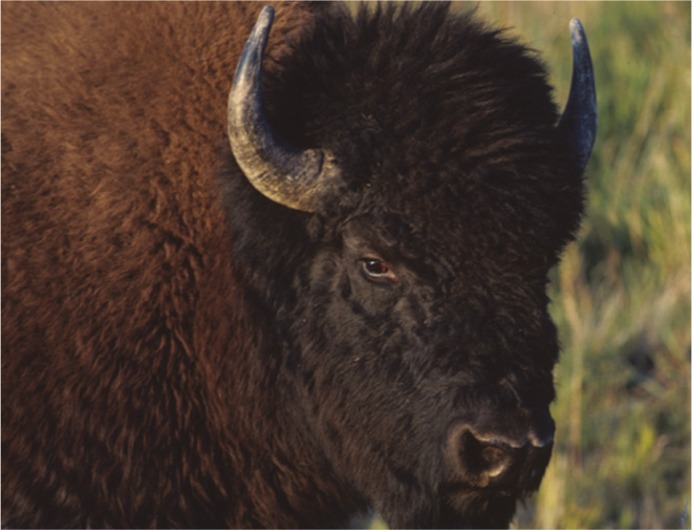Bison invasion of North America

Modern American bison. Image courtesy of the Government of Yukon.
The arrival of bison in North America from Asia was an ecologically significant event, causing a major upheaval within the established large mammal community. The timing of the first bison arrival in North America remains unclear. Duane Froese et al. (pp. 3457–3462) recovered a bison metacarpal fossil from Ch’ijee’s Bluff in northern Yukon, Canada. The stratigraphic context of this fossil constrains its age to approximately 130,000 years, making it the oldest reliably dated bison fossil in North America. The authors sequenced the mitochondrial genome of this bison and that of a slightly younger bison fossil from Snowmass, Colorado. These genomes were compared with those of 44 additional Siberian and North American bison to construct an age-calibrated bison genealogy. North American bison shared a common maternal ancestor dated to 195,000–135,000 years ago, coincident with a period of low sea level and the emergence of the Bering Land Bridge, suggesting that bison first arrived in North America during this time. Both the Ch’ijee’s Bluff and Snowmass specimens were closely related to this common ancestor, despite being considered members of different species. According to the authors, bison may have rapidly dispersed across the continent and diversified within approximately 20,000 years of their arrival. — B.D.
Middle Pleistocene human cranium

Acheulean hand axe. Image courtesy of Wikimedia Commons/Fanny Schertzer.
The Middle Pleistocene Epoch coincides with the appearance of Neandertal ancestors in the fossil record, as well as the emergence of Acheulean stone tools in Europe. The evolutionary history of humans in Europe during this period is a subject of ongoing debate, largely due to the scarcity and uncertain chronology of fossil remains. Joan Daura et al. (pp. 3397–3402) describe a hominin cranium discovered in the Gruta da Aroeira cave in Portugal in 2013. Uranium-series dating of the rock layer in which the cranium was found provided an age of approximately 400,000 years, during the Middle Pleistocene, making the cranium the westernmost Middle Pleistocene cranium found in Europe. The cranium was found associated with Acheulean-style stone tools and animal remains. Further, the cranium exhibits morphological features characteristic of Neandertal precursors, including fused supraorbital arches, as well as features that resemble other fossil species, such as a well-developed angular torus and raised articular eminence. According to the authors, the Aroeira cranium might help elucidate hominin evolution in Europe during the Middle Pleistocene, including the origin of the Neandertals. — B.D.


